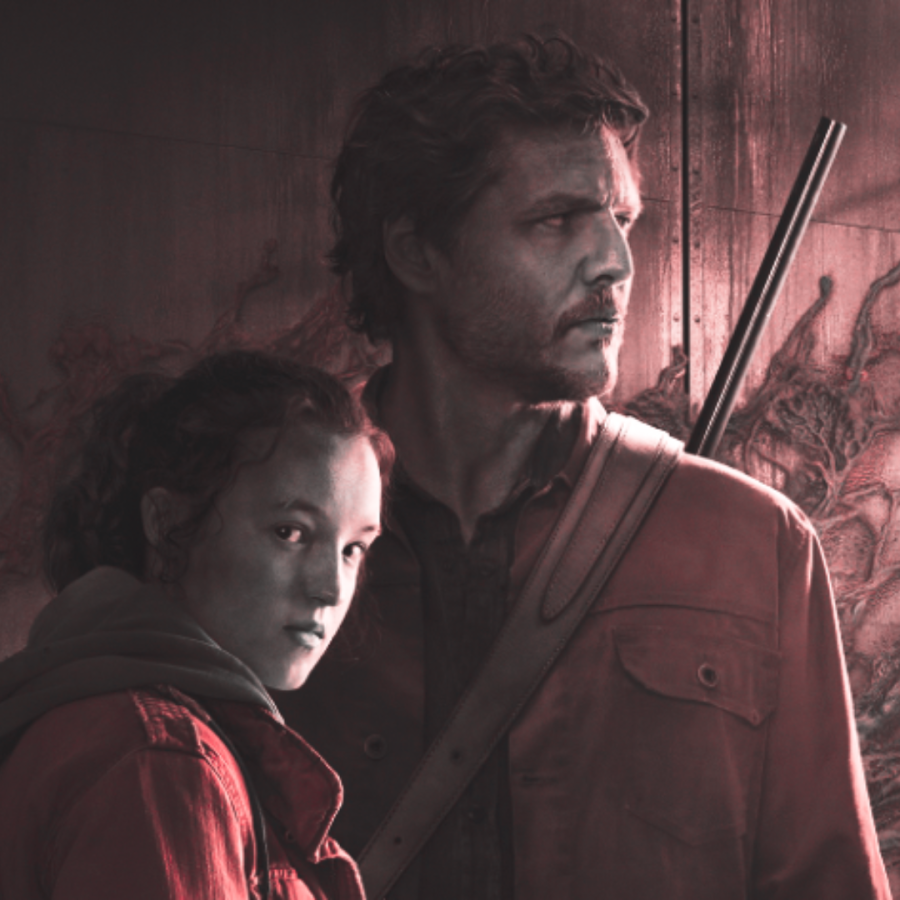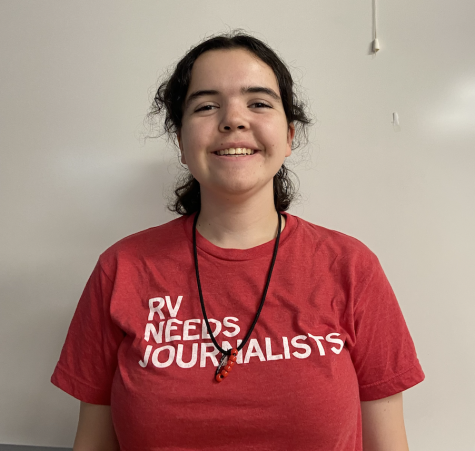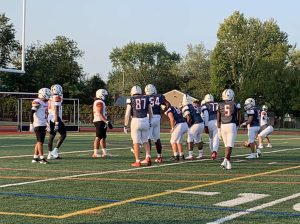HBO’s “The Last of Us” focuses on the humanity in end-of-the-world dystopias
The transition from video game to TV series was surprisingly seamless and masterfully done
Pedro Pascal and Bella Ramsey star in HBO’s adaptation of “The Last of Us”
February 21, 2023
Since the dawn of television, TV and movie adaptations of other media have always been sub-par. From the infamous “Avatar: The Last Airbender” film to “Percy Jackson and the Lightning Thief,” fans have learned to worry when they hear that an adaption is being made from their favorite series. But recently, one adaptation has stood out from the rest as a representation of what an adaptation should be, with everything from the script to the visual design filled with a passion to create a show that embodies its source material.
“The Last of Us,” a 2023 series streaming on HBO Max, is that show. Its source material, a post-apocalyptic survival horror video game of the same title, was released in 2013 by Sony Interactive and sold 1.3 million copies in the first week. As of December 2022, over 37 million copies have been sold. The story of the wildly popular game follows Joel Miller, a cold and cynical man, and Ellie Williams, a jaded teen, on their journey from Boston to Salt Lake City, where a group of survivors known as the Fireflies plan to make a vaccine for the fungus responsible for the apocalypse.
Produced in tandem with Sony Pictures Television, PlayStation Productions, Naughty Dog et. al., “The Last of Us” show employed many crew members from the game. Neil Druckmann, co-writer of the show, wrote “The Last of Us” and both sequels. Composer Gustavo Santaolalla composed the scores for “The Last of Us” Part I, II and the show. Merle Dandridge, who did voice and motion capture in the game, also reprised her role as Marlene.
Ready to dive into the series? Here’s what you need to know — whether you have played the game or not.
Background info to the outbreak
The United States government has been reduced to a few surviving departments. The most relevant to the game is FEDRA, or the Federal Disaster Response Agency, who controls major cities such as Boston and New York City. Inhabited areas of these cities are referred to as “Quarantine Zones,” or “QZs,” throughout the game. Surrounded by massive walls of concrete and barbed wire, QZs are no bigger than thirty blocks, and travel to and from the inside is heavily restricted and regulated.
Ellie, a 14 year old girl, is immune to the Cordyceps infection that destroyed most of the world. She is brash, vulgar and stubborn to a fault; all demonstrative of the suffering and loss she has likely experienced in her short life. Ellie was born after the outbreak and downfall of civilization, and has no other way of understanding life around her.
Joel Miller, a man in his late 40’s, is calloused towards the world: the apocalypse changed him from a caring man to an apathetic one. He has a younger brother, named Tommy, but in the beginning of the story, he lives in Boston and works as a Smuggler. The HBO series changes this a bit, but the gritty, stubbornness that drives Joel’s character is still there.
Throughout the story, Joel and Ellie grow closer together as Ellie becomes like a daughter to Joel. Despite the rocky start of their relationship and the clash of Joel’s coarse indifference to Ellie’s loud stubbornness, the two develop a father-daughter bond over the course of their journey.
Stages of the Cordyceps brain infection
The Cordyceps brain infection, or CBI, has several stages of infection, all of which make appearances in “The Last of Us.” The following section describes most stages, but not when the player encounters them.
- Stage one, known as Runners: this stage begins around two days after being infected (though a bite or inhaling spores). Characterized by speed and sluggish attacks, Runners are the weakest of the Infected, as well as the easiest to kill. Typically appearing in large groups, Runners often swarm and overwhelm their targets.
- Stage two, known as Stalkers: the second stage, begins two weeks to one year after the initial infection. At this stage, a fungal growth has developed over one of their eyes. When a Stalker notices the player (or any human), they will hide in the shadows and use agility to hunt in total silence. Closing in on their prey, they abandon stealth and charge at the victim.
- Stage three, known as Clickers: the third stage begins roughly one year after the infection. Fungal growths on their faces have rendered them completely blind, relying entirely on a primitive form of echolocation to find prey. This echolocation has a very narrow range, as a Clicker will not notice the player behind or to the side of it. If Clickers detect a sound, they will not leave the area until the source is located.
- Stage four: while there are other stages to the infection, only Runners and Clickers appear often. As this review is spoiler-avoidant, I’ll only be mentioning these three.
Differences between the game and show
There’s been a lot of hype about HBO’s “The Last of Us,” and if you’ve played the game and seen the trailer, you fully understand why. Players have become extremely attached to the incredible detail of both the scenery and characters of the game, especially Ellie and Joel, the game’s main characters. The lead actors, Bella Ramsey and Pedro Pascal, play the characters beautifully and with an incredible accuracy to the game. Although only six of the nine episodes have aired, all have remained faithful to or, in some aspects, enhanced the source material.
One such episode which actually dives deeper into a smaller aspect of the video game is the third episode, titled “Long, long time,” which focuses on a minor character, Bill, a doomsday-prepper who actually thrives during the end of the world. He meets another character, Frank, and becomes intwined in a romantic relationship that is exhibited with such restraint, beauty, intimacy and poise, you kind of forget you’re watching a show about the end of the world. Nick Offerman and Murray Bartlett offer a tenderness and sense of humanity rarely seen on shoes like these.
Many students in the RV community have found the connections between the show and the game vibrant and exciting.
“I think that the show is a great recreation of the game, it has aspects that are similar word for word and other parts that are different,” said junior RJ Melendez. “I think mixing in different pieces but keeping the old, meaningful ones, is really making the show flow wonderfully. The game was obviously more fighting and hands on, and the show is still fighting but in a more cinematic way.”
“The Last of Us” is significantly less violent than the game. In the game, the player is able to use violence to progress with little to no repercussions except a loss of ammunition. In the show, however, once Joel and Ellie leave Boston, they rarely encounter much violence from the infected. Joel is much less violent in the show, rarely even unholstering his pistol. This is not to say that it does not exist; there are deaths and murders within the show. But the rarity of violence elevates the drama of action scenes; there are less than ten scenes throughout the four episodes that include characters firing guns. More often, action is replaced with tense scenes with no music; the only sounds are diegetic, Derrick Espino’s sound design amplifying the fear.
Another major aspect the show changed in its adaptation is how the infection is spread. Replacing the unrealistic use of airborne spores, the show introduced the idea of Infected being connected by the mycelium (a specific fungus) that caused the Cordyceps mutation. By employing what biologists call the Wood Wide Web, agitating one Infected is able to wake hundreds of others miles away through the Cordyceps roots spread throughout the area.
The Wood Wide Web, discovered in 1997, is the colloquial term for the Mycorrhizal network that links an estimated 90% of land plants. Through the Wood Wide Web, trees are able to communicate with each other: Mycelium, a thread-like fungus, sends and delivers nutrients and water to other plants in exchange for the plant’s carbohydrates. Older trees send nutrients to saplings in the shade, dying trees send the last of their nutrients back into the soil for other trees, and plants are even able to send toxins to invasive species through the trails of Mycelium.
Final Thoughts
HBO’s “The Last of Us” is a masterpiece, not relying heavily on the source material but instead taking and adapting it to the screen. Ramsey and Pascal (who is having a moment right now and we love it) are incredible as their characters, both the tense scenes and the more relaxed ones highlighting their talents. Neil Druckmann and Craig Mazin understand both the material and how to transform it for television, cutting and highlighting scenes for optimum effect. “The Last of Us” is one of the greatest TV adaptations I’ve ever watched.







